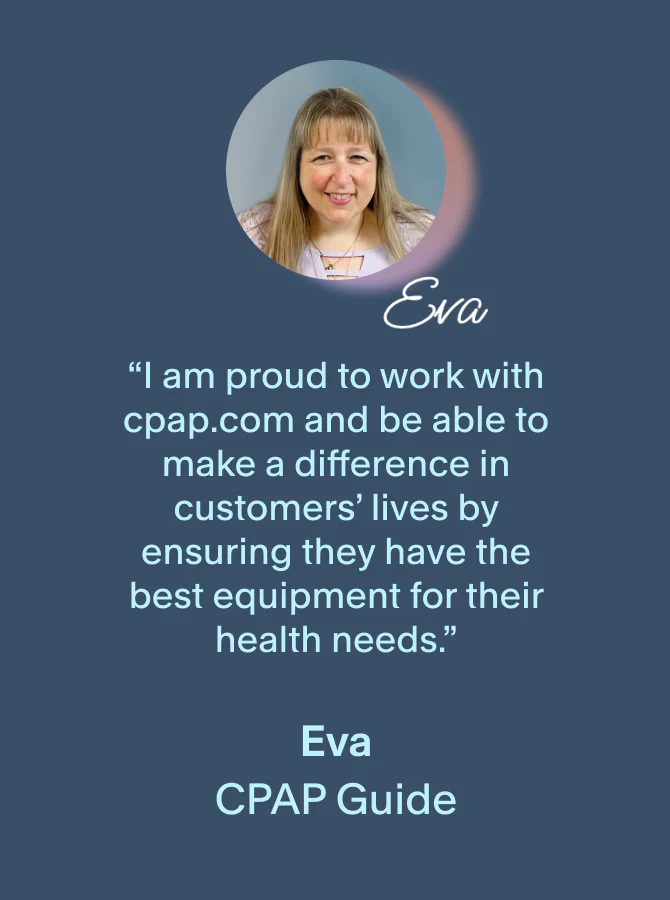It’s no secret that traveling can be a stressful endeavor, especially considering long flights and layovers. While most look forward to relaxing at their final destinations, what if the vacation could start before leaving the tarmac?
We’ve uncovered the most – and least – sleep-friendly airports across North America based on a variety of factors, such as accessibility to massage chairs, lounges, minute suites, benches without armrests, and more to find out which airports offer the best amenities when it comes to relaxation before jet setting to your vacation destination.
Top 20 Most Sleep-Friendly Airports in North America
Before a trip, many people look forward to shutting their laptops, setting their phones to ‘do not disturb,’ and enjoying some well-deserved R&R. As travelers prepare for long travel days, we’ve identified and ranked the top sleep-friendly airports to help you unwind if you find yourself experiencing long delays or layovers.

Surprisingly, the most sleep-friendly airport isn’t located in the US. Mexico City’s Benito Juárez International Airport takes the top spot, offering travelers the best amenities when it comes to getting some rest. This hub offers travelers 19 24-hour food options, six massage chair areas, and 14 lounges with access to shower facilities. Four of the lounges available operate around the clock, allowing travelers to kick up their feet and relax no matter when they find themselves at this airport. Additionally, with over a dozen 24-hour food options to choose from, travelers are sure to satisfy any cravings they might have.
Los Angeles International Airport ranks as the second most sleep-friendly airport, boasting 24 lounges where travelers can rest during long travel days. International travelers can unwind in eight lounges offering a variety of amenities, while domestic travelers can luxuriate in the amenities offered at a few lounges across domestic terminals.
John F. Kennedy International Airport has the most robust offering of lounges for travelers, with a whopping 30 lounges across its five terminals – helping to cement its place as the third most sleep-friendly airport in North America. In addition to the usual airline lounges offering travelers amenities such as food, drinks, free wifi, and comfortable seating – JFK also offers travelers minute suites where they can reserve a quiet space to get work done, get some shut-eye, and escape the hustle and bustle of the airport.
Dallas/Fort Worth International Airport has earned its spot as the fourth most sleep-friendly airport by offering passengers 20 lounges to lay back and relax. Perhaps one of its greatest offerings is the availability of two minute suite locations. Similarly to JFK, these reserved spaces can help travelers rest and recharge.
Philadelphia International Airport rounds out the top five most sleep-friendly airports across North America. With multiple charging station locations, thirteen lounges, and a minute suite location, people traveling through the City of Brotherly Love are sure to find a space to get some rest while traveling.
It’s no surprise that many major airport hubs landed in the top 20 most sleep-friendly airports, considering many travelers find themselves spending extended periods of time in the halls of these international airports.
Top 20 Least Sleep-Friendly Airports in North America
On the flip side, some airports offer little to no amenities for travelers needing rest during long travel days. Here are the least sleep-friendly airports:

Canada’s Fort Mackay/Firebag Aerodrome comes in as the No. 1 least sleep-friendly airport in North America, offering travelers no amenities to rest while traveling. Weary travelers looking to kick their feet up in a lounge or those hoping to get some work done at a charging station won’t find any extra amenities here.
Bethel Airport in Alaska ranks as the second least sleep-friendly airport. Similarly to Fort Mackay/Firebag Aerodrome, it also offers travelers no amenities to get some extra rest while on the move.
Meadows Field Airport in California rounds out the list of the top three least sleep-friendly airports across North America. Though it doesn’t boast many amenities either, it provides travelers with free wifi so they don’t eat away at their data while traveling. Overall, neither of these airports would be ideal to travel through on a long day.
Tips for Traveling with Sleep Apnea
Travel can be stressful for anyone, but even more so for those traveling with expensive health equipment, such as CPAP machines. If you’ve been diagnosed with a sleep disorder, it’s important to stay on top of your treatment plan, even when you’re miles away from home. This is especially true if you’ve been diagnosed with sleep apnea, as going untreated can make it difficult to live life to the fullest. The good news is having a CPAP machine doesn’t have to hold you back from enjoying time with the people you love, experiencing new places, or traveling the globe. Here are some tips to make travel less stressful while jet-setting with sleep apnea.
-
Test and Check Your Equipment in Advance – We recommend carefully inspecting your CPAP machine, mask, tubing, and any extra accessories (such as a backup power supply) two full weeks in advance of your trip. Search for signs of wear or any pieces that could break or fail during your trip. Doing this two weeks in advance will give you time to order any necessary replacements or backups, and will allow you to test any travel accessories, such as a new CPAP battery, in the comfort of your home.
-
Replace Old Supplies – It’s a good idea to replace any worn CPAP supplies with new materials before your trip. Having a fresh tube, cushion, and air filter will make maintenance easier and reduce the chance of something important breaking while you’re away from home.
-
Clean and Dry Before Packing – You’ll want to thoroughly clean your equipment immediately before packing it. Make sure that your equipment is totally dry to prevent mold and mildew from growing in your mask, tubing, or humidifier.
-
Bring Extra CPAP Supplies – While packing a ton of extra supplies can get cumbersome quickly, we highly recommend designating some luggage space for a backup mask cushion, some machine filters, and/or an extra set of headgear . You never know when something might break, get chewed up by an in-law’s pet, or become lost, and having backup supplies will help to keep your therapy on track.
-
Always Travel With a Copy of Your CPAP Prescription – While you’ll almost certainly never need it, you’ll be very glad you have it if the right (or more accurately, wrong) circumstances arise. You shouldn’t ever be asked to show your prescription, but you’ll likely need it in the event you have to order new parts or supplies during your trip.
-
Avoid using the wrong water –No matter where you’re located, it’s never a good idea to use tap water, as it can calcify or cause mineral buildup in your CPAP machine. Keep in mind that if you’re traveling out of your home country, using tap water may even come with health risks, depending on your destination.
Distilled or purified water is the only thing you should use in your CPAP humidifier. We recommend traveling with or purchasing a personal supply of distilled water specifically for your CPAP device. But if you don’t have room or can’t find any, purified bottled water is a good alternative.
-
Bring a Backup Power Source – A CPAP backup battery isn’t necessary most of the time, but if you’re traveling somewhere where there’s any uncertainty whatsoever about the stability or availability of electricity, you’ll still be able to maintain your therapy off the grid with an extra battery pack.
-
Get familiar with airline policies –If you’re flying to your destination, it’s a good idea to contact your airline at least 48 hours before your departure to familiarize yourself with their CPAP policies.
If you are going to use your CPAP machine during the flight, some airlines may require a CPAP battery with a capacity longer than your flight time. Select airlines will have access to powered plugs aboard the aircraft, while others will not have the option, so it’s best to be prepared and know what to expect before you board.
- Carry your CPAP machine onto the plane –Even if you aren’t planning to use your machine on the plane, it’s best to carry your CPAP on board along with your other carry-on items. While standard CPAP machines work fine for travel, consider investing in a compact travel CPAP machine specifically designed for portability if you frequently travel. Baggage carriers are known for being rough with people's luggage, and you don't want to risk damaging your equipment en route to your destination. As an FAA-approved medical device, a CPAP machine legally cannot be counted against you as a carry-on item for domestic flights. Additionally, you should not be required to pay a fee to bring the device on board.
-
Clearly label your medical equipment –While some people like to keep their CPAP use private, it’s always a good idea to place a medical device ID tag on your luggage– especially if you’re traveling through airports.
Medical IDs let TSA, flight attendants, and other airport employees know you are carrying a prescription medical device and that it is legally protected under FAA guidelines. This not only makes it easier to move through security without hiccups but also helps to ensure your CPAP machine is not counted against you as a typical carry-on item.
Whether traveling internationally or domestically, having a seamless travel experience is the goal, but delays and long layovers are sometimes inevitable. Knowing which airports across North America offer the most sleep-friendly amenities can help to ensure travelers are well-rested before or after a trip.
Methodology
Using the following lists of airports in the U.S. , Canada , and Mexico , we analyzed the airports to identify the number and availability of: massage chair areas/massage salons, free WiFi, charging stations, 24-hour food/restaurants, vending machines, lounges, shower facilities, benches without armrests and minute suites. All information was confirmed from individual airport websites, terminal maps, and Google Maps. Data accurate as of May 20, 2024.







